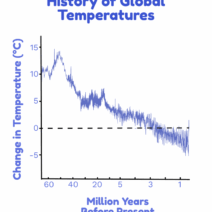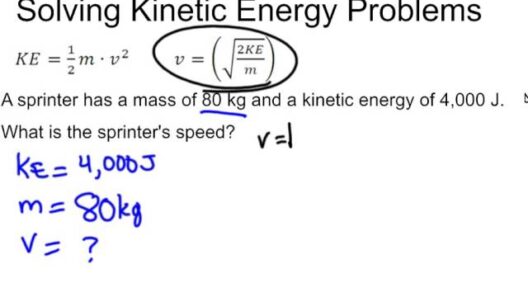In the grand tapestry of physics, few phenomena exemplify the principles of conservation as poignantly as perfectly elastic collisions. These interactions between bodies resemble the delicate dance of cosmic bodies, each motion echoing the principles of energy transfer and momentum. To explore the intricacies of perfectly elastic collisions is to delve into a world where energy, much like a seasoned performer, seemingly vanishes and reappears, leaving observers both captivated and intrigued.
At the crux of our discussion lies the concept of conservation of energy. In a perfectly elastic collision, two objects collide and separate without any loss of kinetic energy. Imagine two billiard balls on a well-maintained table; when they strike each other, they do so with a precision that allows the total kinetic energy before the collision to equal the total kinetic energy afterward. This preservation is akin to a magician’s sleight of hand—nothing is lost, only transformed.
To understand why energy is conserved in these collisions, we need to consider the properties of the objects involved. Perfectly elastic collisions require ideal conditions: the colliding bodies must be composed of elastic materials, and the collision must occur without any external forces acting upon them. Think of them as two perfectly tuned coiled springs, each ready to release its potential energy without dissipating any in the process. This idealization allows us to use fundamental physics formulas unapologetically to quantify the outcomes of such interactions.
When two objects collide elastically, two crucial quantities remain constant: kinetic energy and momentum. Momentum, defined as the product of an object’s mass and velocity, behaves like an unyielding law in nature. In an elastic collision, the momentum before the interaction, when calculated across all involved bodies, equals the momentum afterward. This conservation law operates under a principle akin to a well-crafted symphony, where the harmonious notes of each instrument must still be present, regardless of the drama unfolding on stage.
Consider this: when two objects collide perfectly elastically, one can liken their interaction to a cosmic dance. Their energy and momentum pirouette in intricate patterns of conservation. After impact, not only do they separate, but they do so while transferring energy between each other. The calculations yield results that are symmetrical, reflecting the inherent balance of the universe. Even discrepancies in mass between the two bodies can be reconciled in the aftermath, as long as their velocities conform to the conservation principles. The mathematics underpinning these processes may seem arcane, but at their core lies a beautiful simplicity.
Connecting with this metaphor, envision two dancers, each representing an object in a collision. Their shared moment of contact signifies the interplay of forces and energy transfer. As one twirls off after impact, it may adopt greater speed, while the other could recede, slightly altered yet intact. The feel of the dance reflects physical laws that govern not just particles but also celestial bodies in the vast dominion of space.
Furthermore, the concept of energy states reflects the advancements made in understanding energy forms. In a perfectly elastic collision, kinetic energy remains in the kinetic domain, impeccably preserved, experiencing no transformation into other energy types such as thermal or sound energy. This aspect contrasts sharply with inelastic collisions, where energy may morph into different forms, signaling a loss—the all-too-frequent narrative in our real world where inefficiencies reign supreme. Here lies the beauty and allure of perfectly elastic collisions—they epitomize an ideal that drives much of theoretical physics and engineering. It remains a sparkle amidst the mundane occurrence of energy dissipation in daily life.
With applications in various branches of science and engineering, the practicality of understanding perfectly elastic collisions becomes evident. They assist in designing everything from safer vehicles that absorb impacts without significant energy loss to advanced machinery that operates with optimal efficiency. Further into the scientific arena, they underpin theories in atomic physics and materials science, fostering innovations that could revolutionize our energy-handling capabilities.
To illustrate this point, consider the development of innovative materials that possess high elastic characteristics. Researchers are delving into creating substances that can efficiently utilize energy transfers at the molecular level, akin to the perfectly elastic collision. Here lies an opportunity that can transcend conservation; it is not merely about avoiding losses but channeling that energy into sustainable practices, respecting environmental guidelines and shifting toward greener technologies.
Lastly, as environmental concerns loom large on the global stage, examining perfectly elastic collisions could serve as a metaphor for our interactions with nature. Just as energy is conserved through the intricate dance of kinetic interactions, our stewardship of the environment requires a similar ethos of conservation. We must strive to ensure that our impacts do not deplete but rather conserve and recycle the systems we engage with. The delicate balance between human industry and environmental resilience parallels the whimsical yet precise nature of perfectly elastic collisions.
In conclusion, the allure of perfectly elastic collisions lies not only in their scientific precision but also in the metaphor they conjure—a dance of conservation amidst a world often marred by loss. Each collision embodies a universe of efficiency and balance, urging humanity towards a future where we emulate such harmony in our natural environment. The lessons from these collisions beckon us to recognize potential energy transfers in our world—a call to safeguard what is precious, intimate, and irreplaceable.








